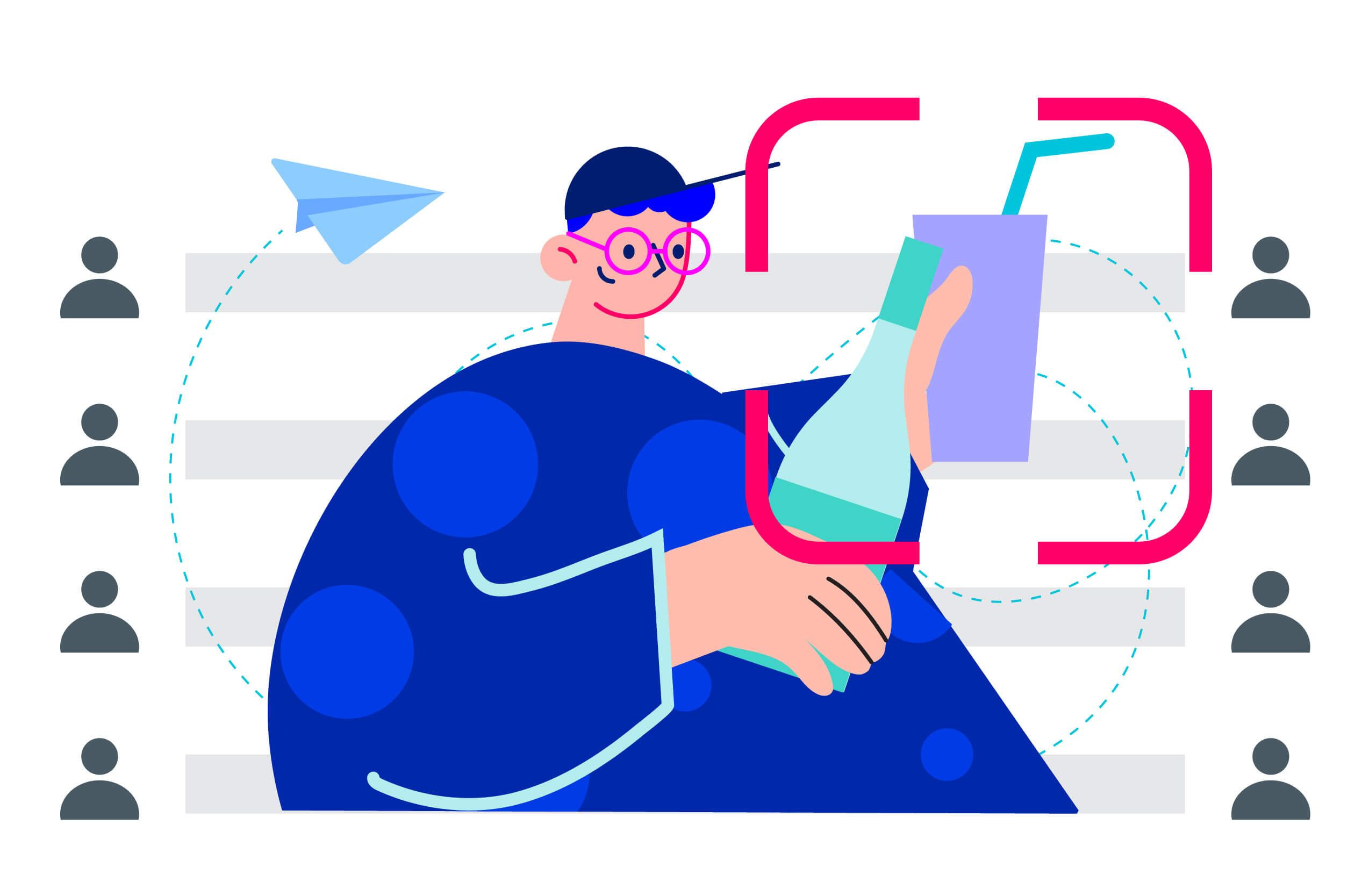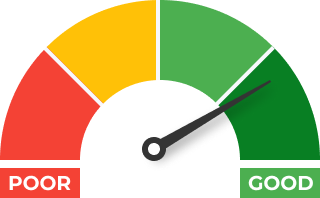Performance reviews are critical in fostering a healthy and ever-improving working environment.
If you’re a bar and restaurant owner, you know that you need to constantly help your employees improve their skills with a methodical feedback system that encourages and uplifts.
But how exactly can you do this? In this article, we’ll help you conduct an insightful and powerful employee performance review for your bar and restaurant.
Why Should You Conduct Employee Performance Reviews?
Before we talk about the exact steps on how performance reviews can be done, we first need to understand why they need to be conducted in the first place.
Here are the primary reasons for conducting evaluations on your employees.
- Create a more objective basis for measuring success. Creating a performance review will invariably include building a system that translates your employee’s performance into metrics that you can objectively evaluate. This includes key metrics such as sales per hour and more.
- Recognize your top employees. When your employees have concrete and formal performance records, you can better assess their effectiveness. This can be helpful for promotions, incentives, or referrals.
- Improve employee effectiveness and satisfaction. Providing well-placed assessments to your employees can help them improve their performance and create a positive work environment that prioritizes growth.
9 Dos and Don’ts for Effective Employee Performance Reviews
Now that you know why employee performance reviews are important in the first place, here’s a list of dos and don’ts when conducting them.
1. Do take a long-term approach
The very first thing that you have to remember is that you’re designing an entire system, not just a questionnaire that you use once and store in a box somewhere.
Employee performance reviews need to be a regular aspect of your workplace culture in order to be effective. From the day an employee is hired to their last week in the workplace, they should be aware that they’re being evaluated. It’s a surefire way to compile enough relevant data to create an impact.
Additionally, since you’ll be dealing with large amounts of data for potentially long periods, it’s in your best interest to use a digital system for storing, organizing, and analyzing the data you collect.
2. Don’t conduct surprise evaluations
Conducting employee performance reviews has the dual purpose of getting an accurate assessment of your workforce’s performance now and improving it in the future.
Surprise evaluations don’t achieve this effect. In fact, they defeat the purpose of gaining an accurate baseline performance of your workforce.
For instance, you might catch your employees on a particularly bad day. Or, you might conduct your surprise performance when everything is functioning at peak efficiency and nothing has gone wrong – yet.
Whatever the case, surprise performance evaluations just don’t cut it. Instead, you need to create a culture of continuous performance evaluation.
You need to engage with your workforce meaningfully so that you know how they function on their bad days and best days, and you need to identify their most pressing workplace concern and how it affects their performance.
You can do this by creating a performance review system that is fast, convenient, and regular.
3. Do set a structure for the review
Performance reviews shouldn’t just be random chitchat about how your employee’s day went and how they performed in their work.
Instead, you should have a set plan or structure. This way, you know where you’re going with your reviews so as not to waste anyone’s time.
Plus, having a clear-cut structure can help you create more grounded questions relevant to what you’re trying to measure.
Here are some of the best goal-oriented structures that you can have for your reviews.
- Hitting KPIs. Key Performance Indicators are critical in measuring the day-to-day numbers of your bar and restaurant. You can do this by choosing the right KPIs and preparing evaluations around them.
- Exhibiting company values. If culture is a primary concern, you can review your employees’ performance on how well they’ve practiced your company values.
- Employee satisfaction. Employee satisfaction is vital in keeping a well-oiled and efficient workforce. With your review sessions, you can measure employee satisfaction balanced with their work performance.
Of course, the items listed above are only examples.
You will likely need to review your employees’ performance across other factors, such as budget, ground rules, and policy compliance – sometimes more than two factors at once.
The critical thing to remember is that you need to have a clear structure in mind before conducting the performance review.
4. Don’t forget to set expectations
Since you’re building a new system from the ground up, you should set the right expectations for everyone in order to run it well. Here’s what to keep in mind:
Logistics
You should divulge the logistical details of the performance review system, such as the frequency, location of the review, how long it would take, and at what days it will happen.
This will let your employees plan their work ahead of time, so they’re not scrambling during the interview or leaving important tasks unfinished.
Preparation
Let your employees know what to prepare, such as things to improve, things to continue doing and overall feedback to you or your floor managers.
When you don’t let your employees know what to prepare, they are more likely to leave something crucial out of the interview. This unintentional omission can harm you both.
Implementation
Let your employees know what they should do right after the review session.
For example, make it a habit to set concrete, actionable steps to address performance issues after each review.
5. Do avoid talking about money matters
Talking about money can influence all other discussions, so you will not get the most natural results.
Thus, you need to separate discussions about money and performance to stay on point and efficient with everyone’s time.
However, keep in mind that compensation reviews are also necessary.
Make sure that you circle back to the topic of compensation on a regular basis, especially if the employee is showing performance improvements. This tells them that their efforts to improve are being rewarded.
6. Don’t leave out self-evaluations
Self-evaluations give you an idea of how your employees view their strengths and weaknesses. This information is essential in crafting a holistic employee performance review.
Self-evaluations can give you the following benefits.
- Better career development plan. These assessments show your employees’ interests, perceived strengths, and perceived weaknesses. When managers know that, they can create a professional development plan that best suits an individual.
- Clearer points of discussion. When an employee’s self-assessment scores differ from their actual work performance, you have a clear-cut topic for discussion in the following interview session.
- Improved employee engagement. Self-evaluations give a stronger sense of autonomy and control over their duties so employees feel more engaged and motivated.
7. Do ask employees for feedback
Employee feedback is a critical part of the employee performance review process.
Most of these interactions need to be two-way streets. As you evaluate your employees on how they can best improve themselves, they should also assess your methods in supporting them.
When you have a good idea of what your employees think is best for them, you can then use those sentiments to improve your new processes.
8. Don’t keep them waiting
Don’t keep your employees waiting for a chance to improve their skills and performance. You should schedule sessions that you faithfully follow from day one. Having a regular schedule for employee evaluation can have three effects.
- Better results. When your employees know how and when your performance reviews happen straight from the get-go, they can better prepare comprehensive information relevant to the metrics you’re trying to track.
- Show that your value their time. Your employees won’t have to rush and can better plan their workload around a scheduled evaluation session.
- Creates a comprehensive data set. Your reviews are important data sources; having them at set intervals gives your future analysis more depth and statistical relevance.
9. Do provide constructive criticism
Constructive criticism is perhaps the most important aspect of your employee performance reviews. After all, the conversation is built on the premise that something needs improvement. Expect to tackle uncomfortable topics such as tardiness and low productivity.
When this happens, you must know how to give constructive feedback instead of getting bogged down with emotional and defensive dialogue.
Here are three tips to get you through potentially uncomfortable review sessions.
- Evaluate behaviors. Employee performance must explicitly discuss behaviors, not traits. This is because traits and characteristics are closely linked to personality: their evaluation will invariably be subjective. On the other hand, behaviors are concrete and can be objectively evaluated.
- Use a format. A format is helpful because it gives you a clear direction of where you need to go. Examples of constructive criticism formats include the sandwich method (negative evaluations sandwiched between two positive assessments) and the “Start, Stop, or Continue” format.
- Provide clear examples. Ensure that you can cite specific instances of the behavior you plan to improve. This will reduce potential conflict as things are clearly laid out.
- Give actionable advice. The difference between constructive criticism and simple badmouthing is the practical directives on what to do to improve the behavior. Avoid cliché lines like “take more initiative.” Instead, give concrete advice that will improve the behavior you’re tackling, such as “log every instance of spillage.”
Conducting Effective Employee Performance Reviews: Wrap-Up
Employee performance reviews are critical to the effective functioning of your bar and restaurant.
If you want to build an always-evolving workplace, you need systems that can keep up with the changes – not just in trends, but also in your people. And the best way to do it is to learn how to conduct effective performance reviews.
With Glimpse, you can collect all the data and insights you need for your performance reviews automatically. Calculate ROI per employee, items sold per hour and a range of other KPIs to help structure your evaluations. The system connects with your POS and video camera footage to identify issues like theft, spillage and other forms of non-compliance. Learn more in a free demo now.









 +1 (786) 292-2373
+1 (786) 292-2373 insights@glimpsecorp.com
insights@glimpsecorp.com





